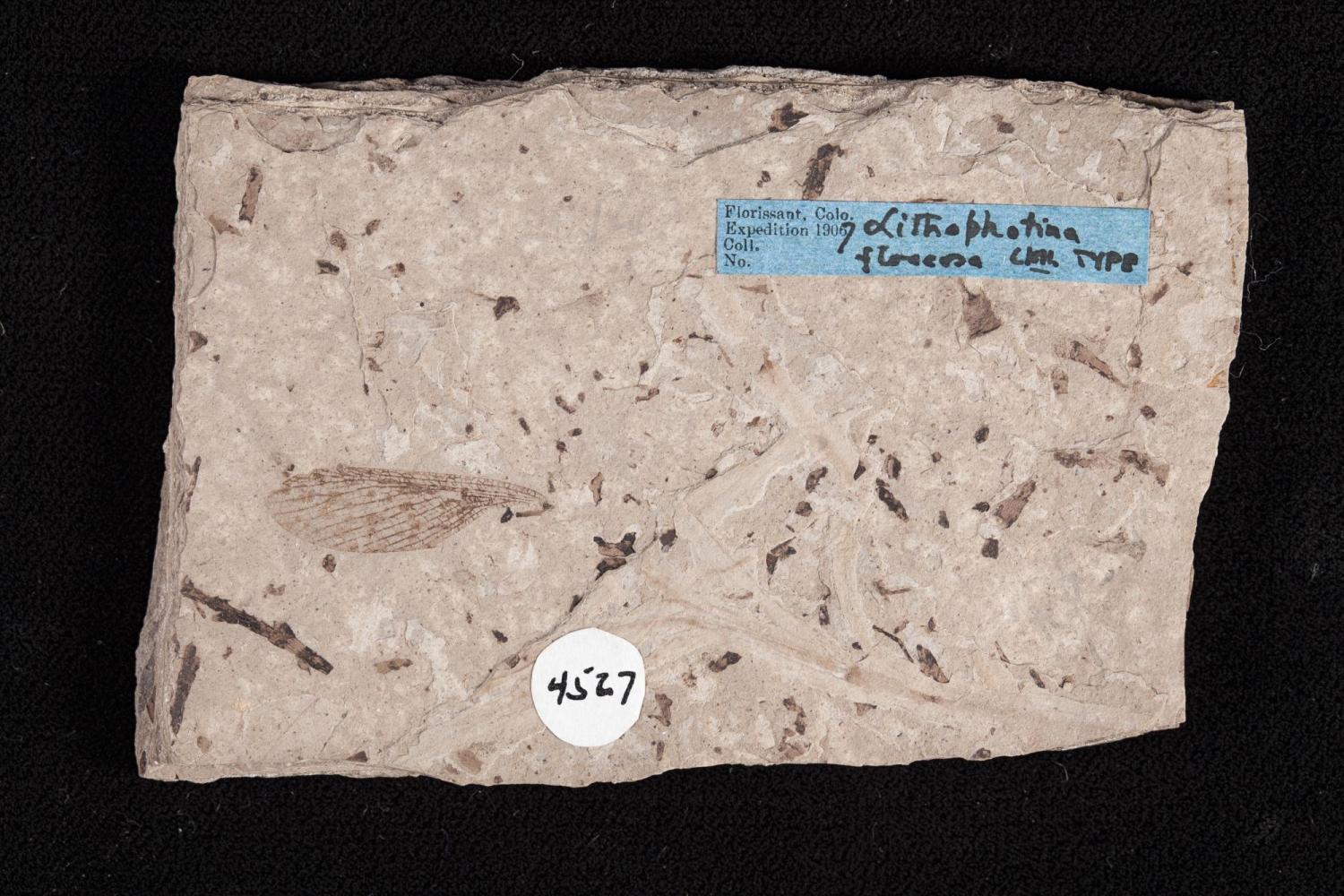The CU Museum is closed. We will be reopening soon.
During this time, collection visits will be available by appointment and other special access requests will be considered on a case-by-case basis.
Please email cumuseum@colorado.edu for more information.
Fossil Mantis
This specimen, Lithophotina floccusa, was found and officially described by TDA Cockerell (Curator CU Museum of Natural History) in 1908 as the first fossil mantis known from the United States1. This fossil from the Eocene (56-33.9 million years ago) provides a link between the Cretaceous Terrestrial Revolution (125-80 million years ago), when mantids first appear in the fossil record, and today when we observe living mantids (including the praying mantis which is found in Colorado).
Since the time it was collected from the Eocene fossil beds in Florissant Colorado, relatively few mantis fossils have been described and the evolutionary history of mantids has remained unclear. But, a new study by Demers-Potvin et al. (2021)2 reexamined the wing morphology of known mantis fossils, including this one, and some newly discovered fossils from Canada to try and gain a better understanding of how they are related to each other and modern groups of mantids. Even though Lithophotina floccusa was collected over 100 years ago, this was the first time it was included in a phylogenetic analysis. The new study indicated that Lithophotina floccusa might be closely related to the Metallyticidae, which are an extant group of mantises that live in Southeast Asia today!
1. Cockerell, T. (1908). The First American Fossil Mantis. The Canadian Entomologist, 40(10), 343-344. doi:10.4039/Ent40343-10
2. Demers‐Potvin, A.V., Larsson, H.C., Cournoyer, M. and Béthoux, O. (2021), Wing morphology of a new Cretaceous praying mantis solves the phylogenetic jigsaw of early‐diverging extant lineages. Syst Entomol, 46: 205-223. https://doi.org/10.1111/syen.12457
Catalog Number: UCM 4527
Scientific Name: Lithophotina floccusa
Description: wing of a fossil mantis
Collected by TDA Cockerell early 1900s, Florissant, Colorado
Age: Eocene


